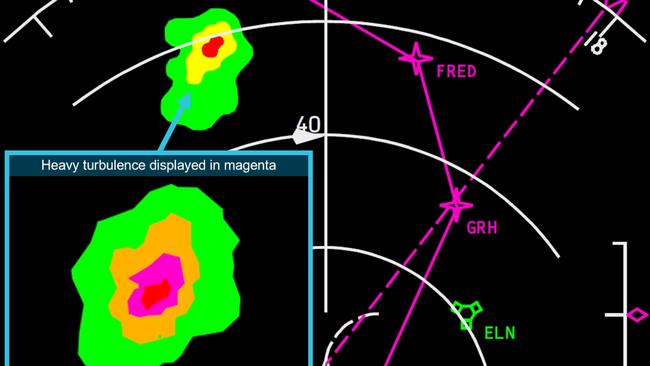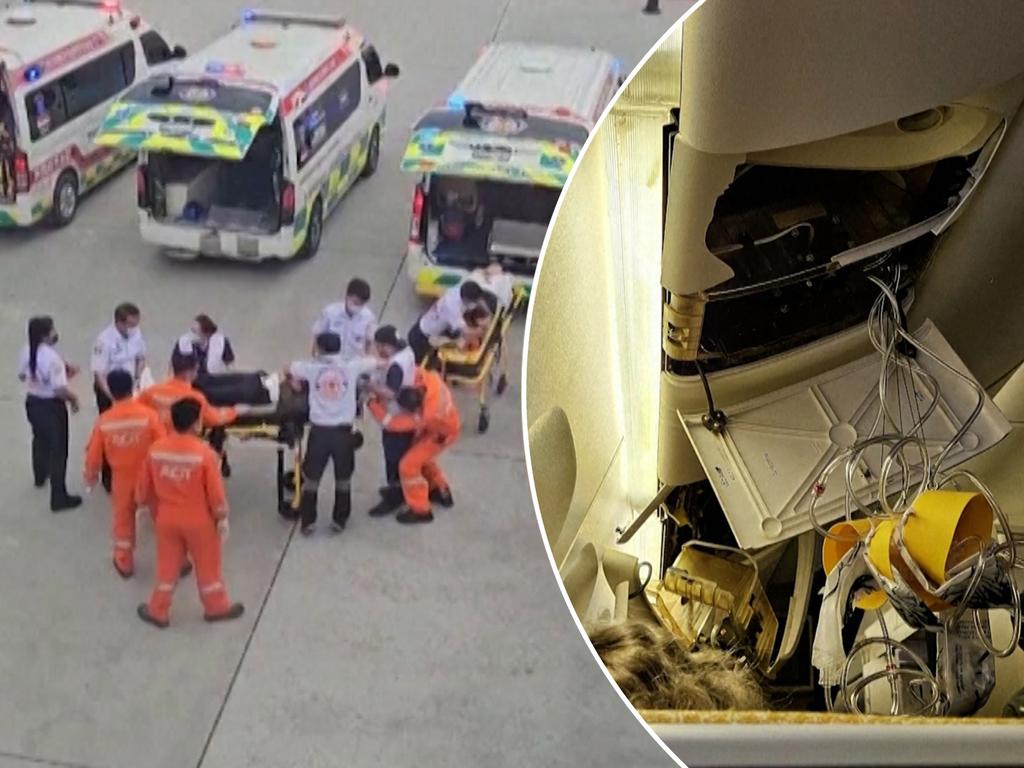Qantas changes crew fitness rules after turbulence led to concussion
Qantas has made changes to its safety protocol after a flight attendant continued to work with a concussion suffered during landing after the pilot failed to alert crew to turbulence.

Business
Don't miss out on the headlines from Business. Followed categories will be added to My News.
Qantas has made changes to a key safety protocol after an investigation found a cabin crew member who suffered concussion during a turbulence episode continued to work on subsequent flights unchecked.
The Australian Transport Safety Bureau exposed the shortcoming in Qantas’ post-incident procedures while investigating the turbulence-related event on a flight from Sydney to Brisbane.
The ATSB’s final report on the incident on May 4, 2024, found three cabin crew were injured, one seriously, after the pilots failed to warn crew of severe turbulence while descending into Brisbane.
It was found that the pilots were likely not aware of the severity of the turbulence.
The most badly hurt crew member suffered a broken ankle and was unable to move from the floor of the rear galley.
Four other people including two crew members and two passengers, stayed with the flight attendant for landing, in a situation the ATSB considered less than ideal.
ATSB director of transport safety Stuart Godley said Qantas 737 standard operating procedures relied on the customer service manager telling the flight crew if the cabin was not secured for landing.
In this instance, the captain was told that some people were standing but did not recall receiving any request for more time to prepare the cabin for landing, and twice directed all uninjured people to return to their seats.
“Landing is a critical phase of flight, and the unrestrained cabin crew and passengers were exposed to a higher risk of injury in a landing-based emergency, which in turn would have compromised the cabin crew’s ability to manage any such emergency situation,” Dr Godley said.
Fortunately the aircraft landed safely with no further injury to passengers or crew, and the seriously injured flight attendant was met by paramedics.
However, the other two injured crew members did not receive any follow up medical assessments or treatment, with one continuing to work on subsequent flights while experiencing concussion symptoms.

The ATSB found Qantas “lacked a procedure to ensure cabin crew fitness was assessed after a significant injury”.
“This increased the risk that a crew member could continue to operate while being unfit for duty,” the report said.
It was noted that Qantas had since updated its post-incident notification protocol to include contact with the airline’s on-call doctor in the event of significant cabin crew injury or illness.
A Qantas spokeswoman confirmed the airline had “promptly expanded its group-wide medical escalation and post-incident medical assessment processes, ensuring all crew onboard a flight are assessed following an incident, regardless of visible impact”.
Dr Godley said the incident also highlighted the importance of collaboration between pilots and cabin crew, particularly in the event of turbulence.
The investigation found the captain had not provided any weather-related information to the cabin service manager despite initiating preparations for landing earlier than usual.
Approaching cumulus cloud along the flight path was not considered an immediate hazard based on a visual assessment by the captain who did not recall identifying areas of turbulence on the 737’s weather radar.
As a result the “cabin crew was unaware of any increased likelihood of turbulence” the report said.
“Data shows that almost 80 per cent of serious turbulence-related injuries in airline operations are sustained by cabin crew, and the most common time for these to occur is when preparing the cabin for landing,” he said.
“Differing understandings of the state of the cabin increases the risk of delayed responses or misaligned decision‑making, which may lead to safety being compromised.”
Originally published as Qantas changes crew fitness rules after turbulence led to concussion





